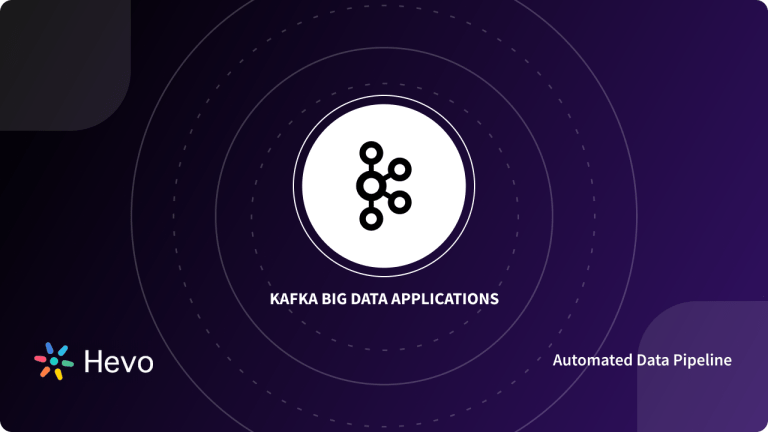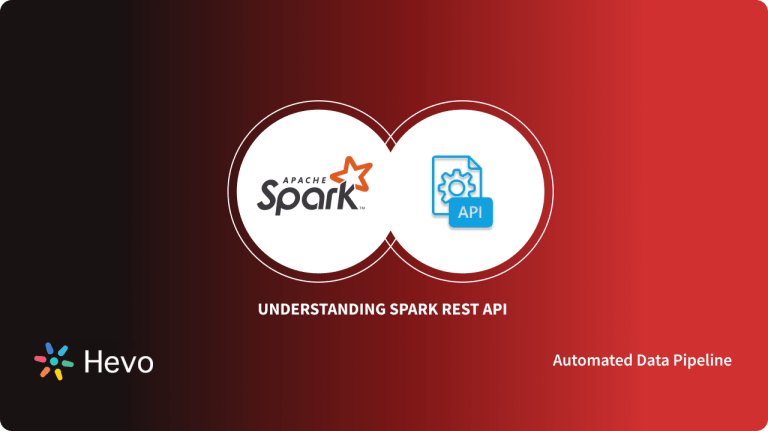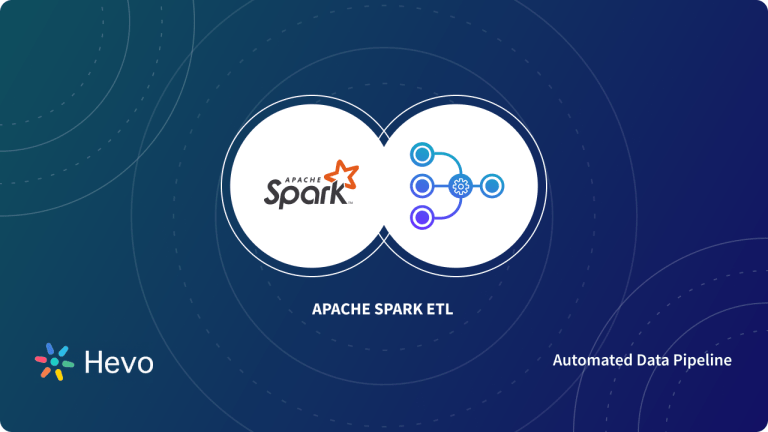In recent years, the phrase “big data” has gained popularity in a variety of industries throughout the world. Regardless of what industry you work in or the size of your firm, the growing volume and complexity of big data necessitate data collection, data analytics, and data comprehension. When you have the right big data processing tools at your disposal, transforming raw data into a form that helps companies make better decisions becomes seamless. This is why it’s so important to have effective data processing tools. There are a variety of big data technologies on the market, including Apache Kafka, Apache Spark, Flink, Apache Storm, and others.
This article will focus on comparing two prominent tools viz., Kafka vs Spark.
Table of Contents
What is Apache Kafka?
Kafka is a distributed, partitioned, and replicated log service that is available as an open-source streaming platform. Created by LinkedIn and later acquired by the Apache Foundation, Kafka has its messaging system. It is a platform that manages real-time data streams with low latency and high throughput.
Apache Kafka, which is written in Scala, facilitates pulling in data from a wide range of sources and storing it in the form of “topics” by processing the data stream. These topic messages can be stored for long periods by apps that can reprocess them to give them useful insights.
Advantages of Apache Kafka
Compared to traditional Message Brokers, Kafka has several advantages.
- It provides for load de-bulking because no indexes are required for the message.
- It improves stream efficiency and eliminates buffering for end-users.
- Without deleting any data, all data logs are maintained with a punched time. As a result, the danger of data loss is reduced.
Migrating your data from Kafka to any destination doesn’t have to be complex. Relax and go for a seamless migration using Hevo’s no-code platform. With Hevo, you can:
- Effortlessly extract data from Kafka and other 150+ connectors.
- Tailor your data to the data warehouse’s needs with features like drag-and-drop and custom Python scripts.
- Achieve lightning-fast data loading into a data warehouse, making your data analysis-ready.
Try for yourself and see why customers like FairMoney and Harmoney have upgraded to a powerful data and analytics stack by incorporating Hevo!
Get Started with Hevo for FreeWhat is Kafka Workflow?
How Kafka Functions
Kafka is a robust publish-subscribe messaging system that handles large data volumes for both online and offline communication. Publishers send messages to a topic, while subscribers consume them. Kafka supports message broadcasting, allowing multiple subscribers to receive copies of the same message.Messages are stored on disk and replicated across brokers for fault tolerance. Kafka uses a distributed messaging model, enabling asynchronous communication between systems. Producers send messages to topics, which are stored in partitions by Kafka brokers to balance the load. If multiple consumers subscribe, Kafka shares data across them based on the number of available partitions.
Role of Zookeeper in Kafka
Zookeeper is essential for managing Kafka’s brokers. It stores metadata, tracks broker activity, detects failures, and ensures smooth integration of new brokers into the cluster. Zookeeper coordinates key operations like partition leader elections, ensuring Kafka’s distributed system runs efficiently.
In Kafka’s queue-based system, consumers with the same group ID share messages. Kafka evenly distributes data until the number of consumers matches the partitions. If consumers exceed the partitions, new ones must wait, ensuring high efficiency and fault tolerance in message handling.
What is Apache Spark?
Apache Spark is a cluster computing framework that is free and open-source. It’s a data processing solution for dealing with large data workloads and data collections. It can swiftly handle massive data volumes and divide jobs across several systems to reduce workload. With the assistance of its DAG scheduler, query optimizer, and engine, Spark is recognized for its high-performance quality for batch and streaming data processing.
Matei Zaharia, who is regarded as the inventor of Apache Spark, began developing it as an open-source research project at UC Berkeley’s AMPLab. It was later designated as an Apache Software Foundation incubated project in 2013.
Advantages of Apache Spark
Advantages of Spark include:
- Spark can leverage Hadoop’s cluster management (YARN) and underlying storage to run as a single-engine (HDFS, HBase, etc.). It can, moreover, work independently of Hadoop, collaborating with other cluster administrators and storage solutions (the likes of Cassandra and Amazon S3).
- Spark can help with advanced analytics like machine learning and graph processing. It comes with amazing libraries, like SQL & DataFrames and MLlib (for machine learning), GraphX, and Spark Streaming, that aid enterprises solve complex data issues with ease. Spark further improves analytics performance by storing data in the RAM of the servers, which is quickly accessible.
What is Spark Workflow?
Spark Architecture: RDDs and DAGs
Spark’s architecture is built on RDDs (Resilient Distributed Datasets) and DAGs (Directed Acyclic Graphs). RDDs are partitioned collections of data that can be stored in memory across worker nodes in a Spark cluster. Spark supports two types of RDDs: Hadoop Datasets, derived from HDFS files, and parallelized collections, based on existing Scala collections.A DAG represents a series of data-processing operations where each node corresponds to a partition of RDDs and each edge represents a transformation. The DAG abstraction enhances performance by eliminating Hadoop’s multi-stage MapReduce model, enabling more efficient task execution.
Spark Execution Workflow: Driver, Workers, and Schedulers
Spark follows a master-slave architecture, where a driver (central coordinator) manages distributed worker nodes. When a Spark job is submitted, the driver program interacts with the cluster manager to request resources and starts the user-defined processing logic.
The execution logic is built in parallel, with transformations being stored as a DAG within the Spark context until an action is triggered. Once an action is called, a job is created, which is broken down into tasks by the DAG scheduler. These tasks are then assigned to the worker nodes by the task scheduler.The cluster manager handles resource allocation and monitors task execution across worker nodes, launching tasks on the executors within the nodes. When a Spark request is submitted, the program and configurations are distributed to all available nodes, enabling local execution without the need for network routing, thereby ensuring efficient parallel processing.
Apache Kafka vs Apache Spark: Quick Comparison
| Feature | Apache Kafka | Apache Spark |
| Core Function | Message Broker (data streaming) | Data Processing Engine |
| Data Flow | Distributes data streams from producers to consumers | Processes and analyzes large datasets |
| Latency | Low latency, optimized for real-time streaming | Slightly higher latency than Kafka |
| Data Processing | Primarily focuses on data movement and delivery | Handles batch processing, stream processing, and complex analytics |
| Use Cases | Real-time event processing, log aggregation, data pipelines | Data warehousing, machine learning, ETL processes |
| Key Strengths | High throughput, low latency, fault tolerance | Powerful processing capabilities, handles large datasets, supports various data formats |
Apache Spark vs Apache Kafka: When to Use Which
Both Apache Spark and Apache Kafka are powerful open-source platforms that play vital roles in modern data processing pipelines. While they share the common ground of distributed computing, they serve distinct purposes and excel in different scenarios.
1. Data Flow & Core Functions
- Kafka: Acts as a high-throughput message broker. It efficiently receives, stores, and distributes streams of data from various sources to multiple consumers. Think of it as a robust highway for data in motion.
- Spark: Functions as a powerful processing engine. It excels at performing complex computations on large datasets, including batch processing, stream processing, and interactive analysis.
2. Latency Considerations
- Kafka: Prioritizes low-latency data streaming. Its optimized message queuing system ensures minimal delay in data delivery, making it ideal for real-time applications.
- Spark: While capable of stream processing, it generally has slightly higher latency compared to Kafka due to the nature of its processing engine. However, it provides a comprehensive set of tools for complex data analysis and transformations.
3. Use Cases
- Kafka:
- Real-time Event Processing: Handling high-velocity streams of events (e.g., sensor data, financial transactions).
- Log Aggregation: Collecting and analyzing log data from various sources.
- Data Pipelines: Building real-time data pipelines for fast and efficient data ingestion and delivery.
- Spark:
- Data Warehousing: Loading and processing large datasets for analytical purposes.
- Machine Learning: Training and deploying machine learning models on massive datasets.
- Large-Scale Data Analysis: Performing complex data transformations, aggregations, and exploratory analysis.
- ETL Processes: Extracting, transforming, and loading data from various sources.
Understanding Apache Kafka and Apache Spark Differences
Here are the key differences between Apache Kafka vs Spark:
- Apache Kafka vs Spark: ETL
- Apache Kafka vs Spark: Latency
- Apache Kafka vs Spark: Recovery
- Apache Kafka vs Spark: Processing Type
- Apache Kafka vs Spark: Programming Languages Supported
Apache Kafka vs Spark: ETL
- Spark for ETL:
- Spark supports the whole process of ETL, that allows users to pull data from sources, process it in memory, and push it to target systems. It works with both batch and streaming ETL workloads.
- Kafka and ETL:
- Kafka does not provide dedicated ETL services but relies on its APIs to build streaming pipelines.
- Kafka Connect API: It manages the Extract and Load phases by connecting Kafka to external systems for data ingestion and export.
- Kafka Streams API: It supports the Transform phase through real-time stream processing and data transformations, making Kafka powerful for stream-based ETL.
- Kafka does not provide dedicated ETL services but relies on its APIs to build streaming pipelines.
- Scalability and Monitoring: Kafka’s APIs leverage its scalability and fault tolerance for managing data connections seamlessly.
Apache Kafka vs Spark: Latency
- Spark for Source Flexibility:
- Suitable for cases where latency is not a concern.
- Due to its support for multi-system compatibility, Spark allows flexible use in various types of data sources.
- Kafka for Real Time:
- Kafka is optimized for the processing of real-time. Kafka has sub-millisecond latencies.
- It is best suited when the application needs immediate response due to event-driven reactions.
- Fault Tolerance: Kafka supports event-driven fault tolerance while Spark supports batch-based recovery mechanisms.
Apache Kafka vs Spark: Recovery
- Fault Tolerance in Spark:
- Spark utilizes Resilient Distributed Datasets (RDDs) to recover from node failures.
- RDDs allow the stages to be retried without losing data, hence providing reliability.
- Kafka’s Data Replication:
- Kafka achieves fault tolerance through data replication across brokers.
- Even in case of server failure, data can be accessed from other nodes, hence it guarantees uninterrupted operation.
- High Availability: Both systems support 24/7 real-time stream processing with strong recovery mechanisms.
Apache Kafka vs Spark: Processing Type
- Kafka’s Continuous Processing: Kafka follows an event-at-a-time processing model, analyzing events in real-time as they occur. This enables continuous stream processing, ideal for real-time data analysis.
- Spark’s Micro-Batch Processing: Spark uses a micro-batch processing model, where incoming data streams are divided into small batches. These batches are processed in short intervals, making Spark more suited for near real-time stream processing.
Apache Kafka vs Spark: Programming Languages Support
- Kafka’s Limited Programming Support: Primarily on data transport and streaming with very little built-in support for transformation of data.
- Spark’s Language Flexibility: It supports Java, Scala, Python, and R, which makes it versatile for advanced analytics, machine learning, and graph processing.
You can also read more about:
Conclusion
This article introduces two of Apache’s most popular big data processing tools, Apache Kafka and Apache Spark. It gives you an overview of their advantages, workflows, and fundamental distinctions to assist you in making better decisions and processing information according to varying needs before diving into Apache Kafka vs Spark.
Explore our comprehensive guide on Spark real-time streaming to master the setup and optimize real-time data workflows.
Extracting complex data from a diverse set of data sources to carry out an insightful analysis can be challenging, and this is where Hevo saves the day! Hevo offers a faster way to move data from Databases or SaaS applications like Kafka into your Data Warehouse to be visualized in a BI tool. Hevo is fully automated and hence does not require you to code.
Want to take Hevo for a spin? Explore Hevo’s 14 day free trial and experience the feature-rich Hevo suite first hand. You can also have a look at the unbeatable Hevo pricing that will help you choose the right plan for your business needs.
FAQs
1. What are the use cases for Spark and Kafka?
Spark Use Cases: Spark is ideal for batch processing, ETL workflows, machine learning, and graph processing tasks, leveraging its ability to handle large datasets efficiently.
Kafka Use Cases: Kafka excels in real-time data streaming, event sourcing, log aggregation, and building data pipelines, enabling low-latency data transfer and processing across distributed systems.
2. Why Kafka is better?
Kafka is better for real-time processing due to its low-latency, event-driven architecture, enabling efficient handling of high-throughput data streams. Its robust fault tolerance through data replication ensures reliability and availability, making it suitable for mission-critical applications.
3. What is Kafka in PySpark?
n PySpark, Kafka serves as a data source for streaming applications, allowing users to read and write data from Kafka topics using the Structured Streaming API. It enables real-time data processing by seamlessly integrating Kafka’s message streaming capabilities with Spark’s powerful data processing framework.
4. What is the disadvantage of Kafka?
A disadvantage of Kafka is its complexity in setup and configuration, which can make initial deployment and integration with existing systems challenging. Additionally, while Kafka excels in real-time data streaming, it lacks built-in support for advanced data transformation, requiring additional tools for complex processing tasks.











